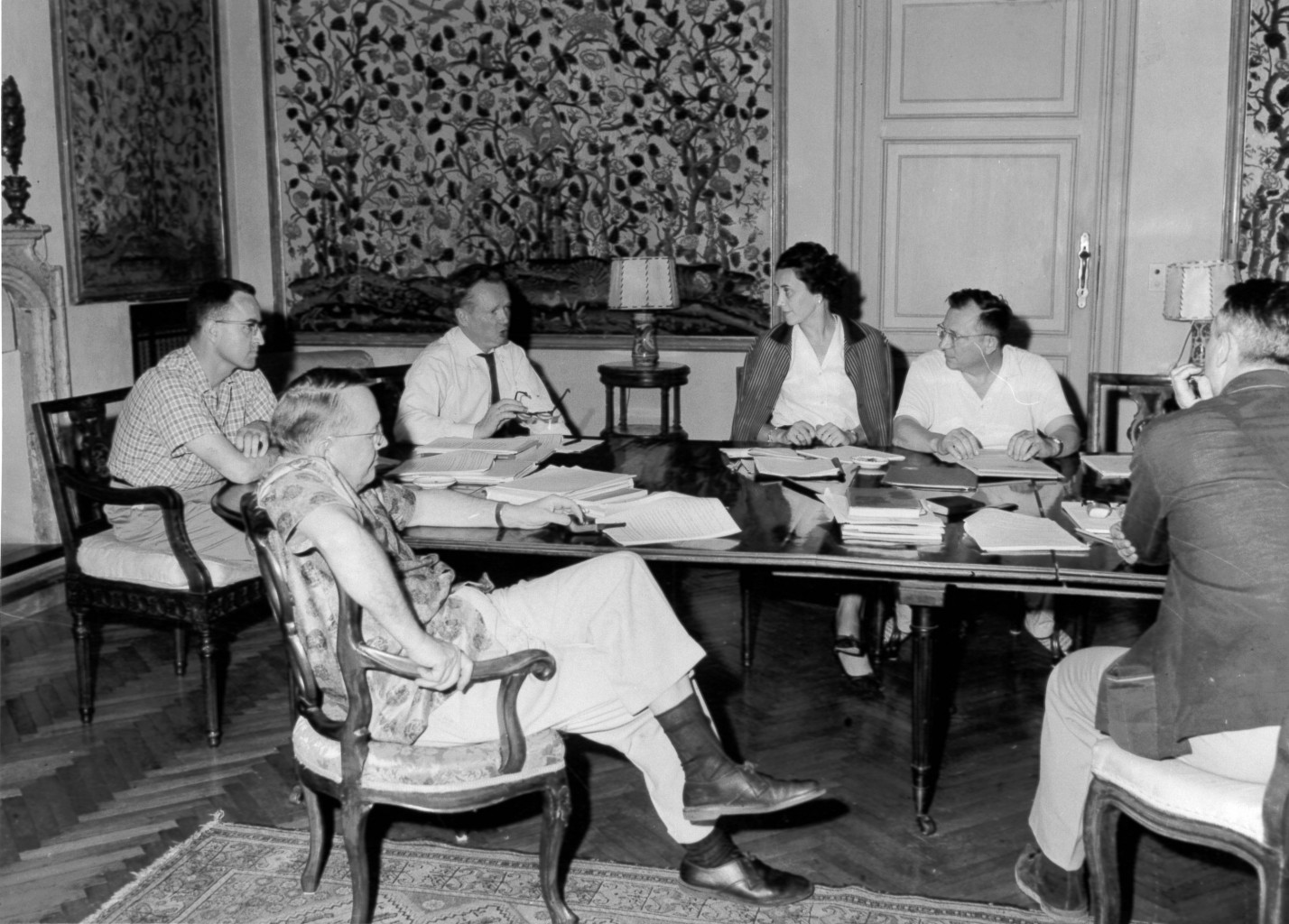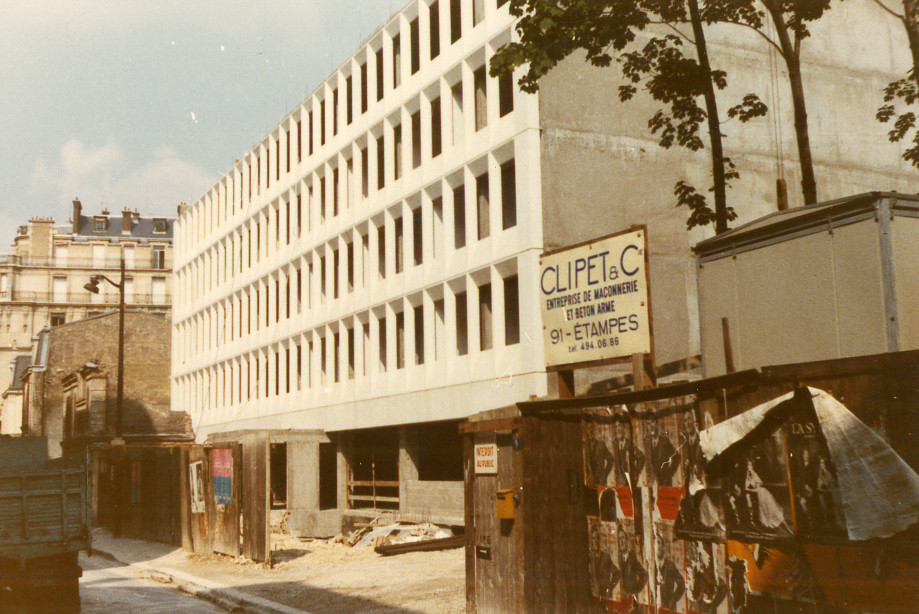IIEP-UNESCO: History of a pioneering institution
1963_first_gb.jpg

The UNESCO International Institute for Educational Planning was created in July 1963 amid unprecedented educational expansion and change. Science, technology, economic development, politics, and culture were also undergoing major changes – which would all impact education in various ways.
At the same time, European reconstruction was underway in the post-war years, and a wave of decolonization swept through sub-Saharan Africa in 1960 as 17 nations gained independence. Together, this ushered in a new era and a burgeoning field – educational planning – emerged to guide countries in designing education systems for changing times.
IIEP was created in Paris, at the initiative of UNESCO and with the support of the World Bank, the French government, and the Ford Foundation as important founding and financial partners. The French Government also offered to host the Institute.
From the outset, it was conceived as an autonomous, multidisciplinary organization, designed to support educational planning capacities in developing nations, to build bridges between international actors, and offer expertise on strategic educational issues.
Fulfilling the right to education starts with planning
Education is a fundamental human right. This is at the heart of UNESCO’s mission, which calls for the collaboration of nations to “advance the ideal of equality of educational opportunity without regard to race, sex, or any distinctions, economic or social.”
Reflecting on this mission, UNESCO adopted the Convention Against Discrimination in Education on 14 December 1960. Two years later, on 22 May 1962, the Convention entered into force, becoming UNESCO’s first major international instrument that has binding force in international law and a cornerstone of its work for decades on.
At the same time, UNESCO started to field many requests for technical assistance from developing countries. Part of this demand stemmed from education conferences that UNESCO organized in all world regions – from Addis Ababa, Karachi, to Santiago de Chile – in the late 1950s and early 1960s to help shape educational policies and strategies and to allocate funding to education.
The link between education and national economic development was also becoming clearer. Education was seen not only as a fundamental human right but as an investment to spur economic growth.
Demand for education was consequently rising fast, with educational planning not far behind. Parents wanted to enroll their children at unprecedented rates, and the democratization of education coupled with record population growth stretched existing education systems.
A dedicated organization gains traction
The idea for an educational planning institute first emerged during the seminal Washington Conference on Economic Growth and Investment in Education, which was convened by the Organisation for Economic Co-operation (OECD) in October 1961.
Then, in June 1962, a UNESCO advisory commission further studied the idea of an international institute dedicated to research and training in educational planning.
The participants discussed its mission, structure, and management. It was agreed that IIEP would be a multidisciplinary place to take courses and gather useful experiences, for educators, economists, and sociologists. There was also consensus on it being an autonomous institution, which was seen as a prerequisite for attracting high-level experts and students.
I know of no human activity that is much more important at this moment in the world’s history than research and teaching in educational planning, and I know none that is more difficult.”
C.E. Beeby, Chairman of UNESCO Executive Board, First session of the IIEP Governing Board, 18 July 1963
From the start, this autonomy was seen as the condition that would allow it to "acquire the intellectual stature that is expected of it", in the words of René Maheu, then Director-General of UNESCO
Of course, planning does not create development, but there can be no development without planning. Moreover, planning is an intellectual discipline that forces governments to think of the present in terms of the future and to think of the future in terms of deliberate choices".
René Maheu, Director-General of UNESCO, first session of the IIEP Governing Board, 1963.
Building on this, IIEP was given a special institutional status within UNESCO, which gave it the flexibility, agility, and strength to carry out its mission. While IIEP sat within UNESCO’s legal framework, it was given its own Statutes and a Governing Board to guide its policies, programmes, and budget.
As the Institute became more established, educational planning continued to grow and evolve. Its interdisciplinary nature also became more apparent, and economists, sociologists, psychologists, and political scientists all made important contributions. By the 1970s, educational planning included regional planning, microplanning and school mapping, and alternative forms of educational delivery.
Learn more about IIEP’s history.
A multi-faceted institute, an integrated approach
From the start, IIEP's mission has focused on capacity building in UNESCO Member States, and the production of knowledge in educational planning. Building on its two historical functions of training and research, IIEP has been involved in operational technical cooperation activities since the mid-1990s. This provision of in-country support has continued to expand ever since.
Over time, IIEP has also expanded its role as a catalyst for educational transformation, encouraging and facilitating the dissemination of resources and information to Member States.
The combination of training, research and development activities, technical cooperation, and the sharing of resources and knowledge, is not only the identity of the Institute but also what makes it unique. Even today, IIEP relies on these four complementary pillars, which feed off each other.
The Institute's expansion has also been geographical, through the establishment of two regional offices in Buenos Aires, Argentina (1998), and Dakar, Senegal (2013).
In 1995, IIEP also helped establish the Asian Network of Training and Research Institutions in Educational Planning (ANTRIEP), a regional network to create synergies between 22 institutions. Similarly, IIEP supported the creation of the Regional Centre for Educational Planning (RCEP) in 2001 to enhance and support educational systems in the Arab region through training, consultancy, and dissemination of knowledge.
A new call for transformation
The founding of IIEP in 1963 was very much in reaction to the global context. Fast forward 60 years, and the transformative role of education has once again risen to the top of the global agenda with fresh calls to mobilize governments and craft innovative solutions to overcome the global learning crisis, as well as other challenges of the day.
Six decades on, planning remains as relevant as ever to foster climate-ready education systems, undo disparities, and create robust, sustainable, and equitable education systems ready for the future.
Educational planning deals with the future, drawing enlightenment from the past".
Philip H. Coombs, What is educational planning?(1970)
As aptly summarized by IIEP’s first Director, Philip H. Coombs, educational planning is a “springboard for future decisions and actions … planning is a continuous process, concerned not only with where to go but with how to get there and by what best route.”
Philip H. Coombs, the founding Director of IIEP-UNESCO
Founding Director of IIEP-UNESCO, Philip H. Coombs (1915-2006) was a pioneering figure in educational planning. Before being appointed as the first IIEP Director, United States President John F. Kennedy appointed Coombs as the first Secretary of State for Educational and Cultural Affairs in 1961. Prior to this, from 1952, he was the Director of Research of the Fund for the Advancement of Education of the Ford Foundation.
As IIEP’s first Director, he secured the Institute’s financial future and launched the IIEP Advanced Training Programme, which would remain IIEP’s flagship for more than half a century. He was a leading figure in thinking on education and rural poverty in the developing world. He completed a wide range of research projects and the seminar on the Qualitative aspects of educational planning resulted in the landmark publication edited by C.E. Beeby. His work, The World Educational Crisis: A Systems Analysis went on to be published in eight languages.
Retrospective: the directors of IIEP-UNESCO since 1963
- Martín Benavides (Peru), 2023-present
- Karen Mundy (Canada), 2021-2022
- Suzanne Grant Lewis (USA), 2014-2021
- Khalil Mahshi (Palestine), 2010-2014
- Mark Bray (United Kingdom), 2006-2010
- Gudmund Hernes (Norway), 1999-2006
- Jacques Hallak (France): 1988-1998
- Sylvain Lourié (France) 1982-1988
- Michel Debeauvais (France) 1977-1982
- Hans N. Weiler (USA) 1974-1977
- Raymond Poignant (France) 1969-1974
- Philip H. Coombs (United States), 1963-1968
 |  |
| IIEP Research Seminar 1964 in Bellagio, Italy | Class of 1970 of the IIEP Advanced Training Programme |
 |  |
| The new IIEP-UNESCO headquarters building, rue Eugène Delacroix, Paris, 1973 | Workshop in the Philippines on institutional management of higher education, 1998 |







